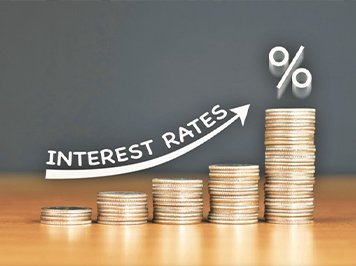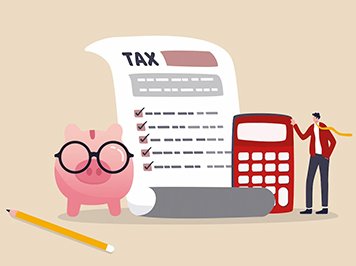Our guide on what to consider when it comes to refinancing.

Since you got your home loan, chances are that interest rates may have moved (and life has too).
Even though most loans are around 30 years in length, you may be surprised to hear that Australians often change their home loan every 4-5 years as they refinance.
Refinancing is a chance to look at what’s out there and see whether your current loan is still the right one for you. If it’s not, it may be time to refinance.
If you are looking to switch, this guide contains some of the key things you may want to consider.
Please note, we do not provide tax, legal or accounting advice. This guide has been written for general informational purposes only, and is not intended to provide, and should not be relied on for, tax, legal or accounting advice. We encourage you to consult your own tax, legal and accounting advisers before engaging in any transaction.



Reviewing your home loan every year or two is a good habit to get into.
Obviously the first question to ask is, could you be paying less? A loan with a lower interest rate or less fees can be the simplest way to reduce your repayments. It means you can unlock a little more spending money, or better still, pay off more of your principal to pay the loan back sooner.
But it’s not all about interest rates. Sometimes the loans with the lowest rates also sacrifice features that are not only handy, but also save you money in the long run. For example:
Of course each lender will have its own terms and conditions, and it is important to consider the effects of these rules when choosing a loan.
One of the most common reasons to refinance is to renovate.
If you’ve owned your home for a while and its value has increased, you may be able to use this equity to fund your improvements. An added bonus is that if you renovate well, you could potentially add more value to your property. If the extra funds for the renovation are put into an ‘offset account’, you may be able to avoid paying interest on the renovation funds until you start using them.
You could also consider a ‘line of credit loan’ which is essentially like a credit card with a bigger limit and usually much smaller interest rate. These funds are available to draw down on as you undertake your renovations, and you only pay interest on the amount you’ve used.
When it comes to refinancing, you need to know exactly what is out there in the market to know what your options are.
That’s where a mortgage broker like us can help. We deal with lenders and evaluate loan rates and features day in and day out. We understand the current market and can offer a wealth of information and expertise for you to draw on. Not only will we help you find the right loan, we’ll aim to make the whole application and approval process much easier.
The first thing we will do is catch up and chat about your current loan and circumstances, and find out what your needs and goals are, and how they may have changed since you took out your loan.
We can then give you an accurate idea of your current costs; identify any potential savings from rates, fees or features; and re-evaluate your borrowing potential. From here we can then help find the right loan for you.
As your broker, we will look for a loan that suits you and your circumstances. With access to multiple lenders and an array of different loan products, we stay up-todate with the changes within the market and new products from the lenders as they come online.
Once we’ve identified a loan that works for you, we take care of the application process on your behalf.

Of course you can go to a bank, but this can be more difficult than it sounds.
As a mortgage broker, we’re very good at letting you know what’s changed in the market.
But when you’re looking at refinancing, it’s just as important for you to walk us through what’s changed in your life, as this can be the deciding factor in what type of loan you refinance into.
Firstly, your income may have changed. Hopefully it’s gone up, but it may have dropped. Your bank balance could have changed significantly thanks to an investment, business interest, or an inheritance.
You could have had a change in your relationship status, or you may be planning on starting a family. Your living expenses may have increased, or you may have taken out other loans or credit cards. It’s also very important to know the change in value of your property since you took out your current loan. All of these factors will influence your new borrowing potential.
There’s a lot more to refinancing loans than just finding more attractive rates and fees.
Obviously a low rate is important, but it’s not everything. Your new loan may be a different type to your current one and even offer features that will make managing your mortgage easier. We can take the time to show and advise you on the differences of each to help you make an informed decision.
There are many subtle differences between each lender’s loans, but here is a basic rundown on the type of loans you could consider.

The interest rates go up and down depending on factors such as the official cash rate, market conditions, and each lender’s decisioning. When the rate goes down, so do your minimum repayments. But when the rate goes up, your payments will too.

The interest rate can be fixed for one to five years. Even if rates change, your repayments stay the same. This helps manage your household budget by knowing exactly what you’ll have to pay. Of course, you won’t benefit if interest rates drop and there may be significant break costs to change the loan before the end of the fixed term.

One part is variable, the other is fixed. This lets you enjoy the benefits of an interest rate drop but also protects you from being affected fully if they rise.

You only pay the interest on your loan but not the principal loan amount. Your repayments are less but you still have the same level of debt at the end of the interest only period. However, an interest only loan will usually cost more over the term of the loan as you won’t start paying off the principal until after the end of the interest only period.

You can pay into and withdraw from this account as long as you keep up with the required repayments. You can have your income paid into this account to help pay off the mortgage sooner but interest rates are usually slightly higher.

Designed especially for first homebuyers, you can enjoy a lower interest rate for the first six to 12 months, and then the rate returns to the standard variable rate.

These are popular with self-employed people because they need less documentation or proof of income. However, they usually have a higher rate of interest or need a larger deposit, or both.
One of the main reasons to refinance is to improve your financial position.
So you’ll need to know what other costs are involved in ending one loan and moving to another. Only then can you weigh up the benefits of switching loans. The best way to do this is to speak to your broker, but here are some of the fees and costs that some lenders may charge:

A lender may charge you a termination fee.

If you have a fixed rate loan you could be charged a break cost.

This is often charged on settlement of the loan.

A lender can charge this fee to have your property independently valued.

May be payable if you’ve had your loan for less than a specified period (e.g. five years).

A fee charged once the loan is settled.

Charged when you switch your mortgage to a new lender. This amount varies from state to state.

If your new loan is worth more than 80% of your home’s value, a lender will ask you to pay this to protect them from defaults.
Most lenders will only charge you some of these, not all. When talking through your situation with us, we can help you understand what it will cost to end your current loan, and begin the new one.

If there’s something you don’t understand or need more of an explanation, please just pick up the phone or email today.
